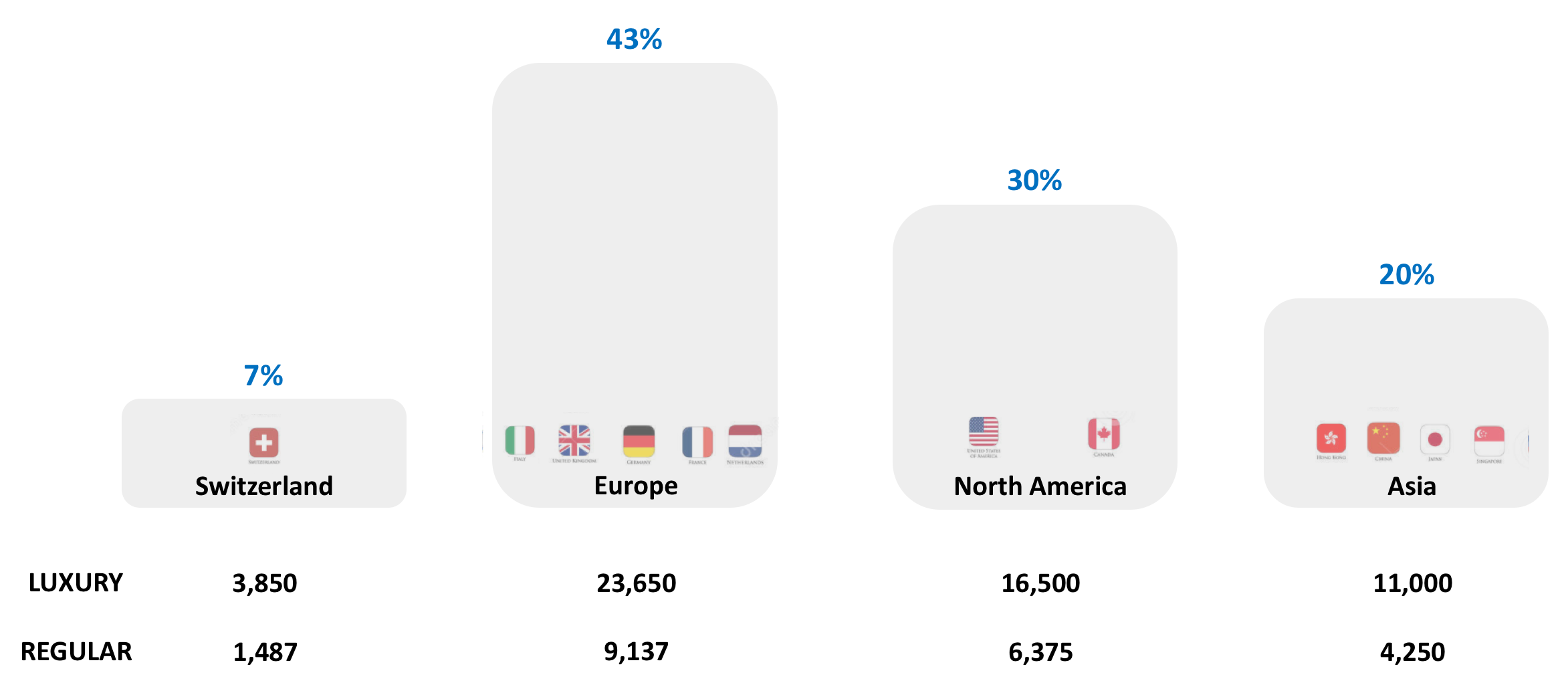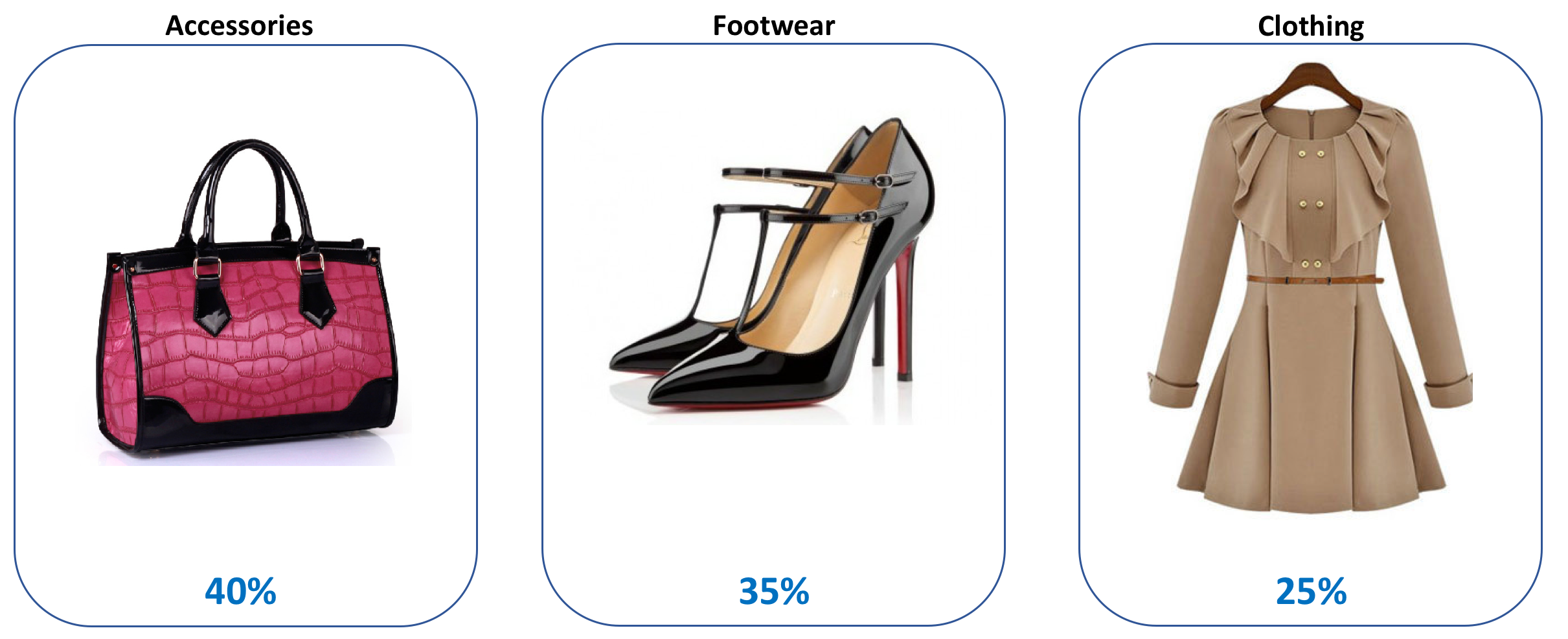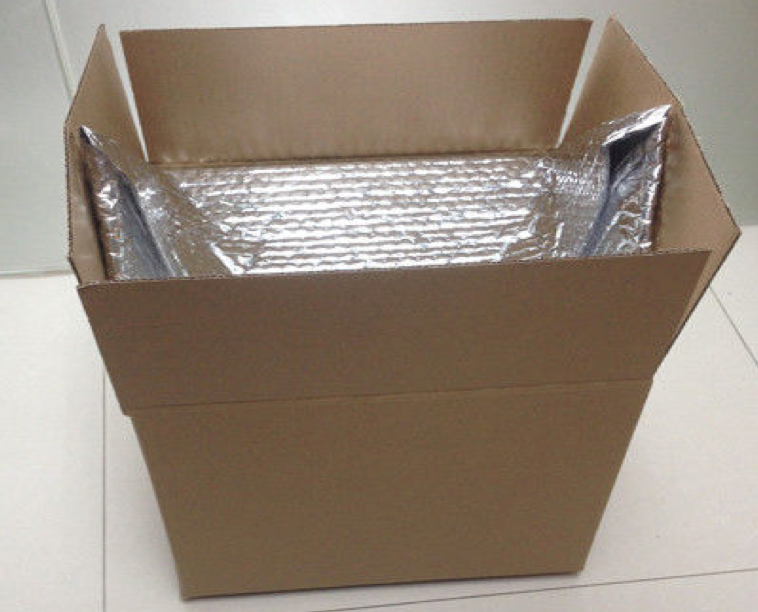As seen in the previous session, in order to make the scenarios comparable, we have decided to have same Business Requirements for Market Share of Sales, Product Categories and Packaging.
In this session we will analyse each of them.
Market Share of Sales
First information you need when you want to understand how to set up Distribution is, where to deliver the packages. Therefore the basic between Business Requirements is the Market share of Sales.
I remind you that in our exercise the Total Volume of Sales in case of the Luxury Brand is CHF 55,000,000 while in case of the Regular Brand is CHF 21,250,000.
In this picture is reported how the Planned Volume of Sales should be split between four main areas.
In this exercise the two Companies are distributing both from Switzerland, whose market share is 7% in terms of planned sales.
The two Brands distribute in Europe in 5 Countries: Italy, United Kingdom, France, Germany and The Netherlands. Europe is the most important region for both with 43% of planned sales.
Then 30% of sales are planned in United States and Canada.
And finally they also sell in Asia, generating 20% of sales in Hong Kong, China, Japan and Singapore.
Based on the above information, we can start the negotiation with the relevant forwarders to verify costs of Delivery from Ticino to each of these countries. We will go through the results of this negotiation, together with the alternative options in terms of Service Levels and/or Transit Time, in the successive session.

Product Categories
In our exercise we have two Fashion Brands.
- Luxury Brand, with average retail price 550 CHF before VAT
- Regular Brand, with average retail price 85 CHF before VAT
To understand a business is key to understand what kind of products will be managed.
To make the first run of this Business Case simple, we assume that both Brands have same Product Categories profile for Ladies and Men.
- Accessories, like bags, wallet, belts cover 40% of the total volume of business.
- Shoes, Boots and Sandals cover 35%
- Clothing, Ready-to-Wear cover the remaining 25%.
- Furthermore, the definition of this Business Requirement is also fundamental to start understanding a lot of other things, such as for example:
– warehouse organisation
– sizes and weight of packages
– custom duties.

Packaging
Standard Packaging
Between all Business Requirements, this is probably one of the most critical, because its definition has impacts at different levels. Therefore it is fundamental that all parties are properly involved in its definition, as Digital Marketing, Retail Operations, Brand Image and also Supply Chain Logistics.
The minimum level of packaging eCommerce Merchants can adopt is the one used in B2B.
With a standard packaging there is minimum impact in terms of costs during the outbound phase in the warehouse as the packing operations is very simple and fast. Also the cost of delivery is minimum with this solution.
To apply a standard packaging is very uncommon in case of eCommerce, because Merchants give great importance to the Customer Experience during the delivery of their packages and this package is very rude.

Premium Packaging
As Customer experience is key in eCommerce, usually Merchants invest a lot of efforts in trying to organise the delivery to the end consumer as the client is staying in a store.
For this reasons very often the packaging requirements are very elaborated and, consequently, their impact in terms of operational costs needs to be duly considered while building a consistent Business Case.
If a B2B packing operations can take max 15 seconds per unit, in some cases Luxury Brands require very sophisticated packaging that can take more than 6 minutes per unit.
Regardless the cost of material, that is not covered by this Business Case, the impact in terms of outbound costs in the warehouse can be tremendous.
The level of sophistication of Packaging Requirements is neutral for the Inbound and Storage (with the exception of space to be reserved to relevant materials).
Premium Packaging has a certain impact also on Delivery costs, but not so relevant as for the Outbound costs in the warehouse.
In the succesive definition of Logistics Parameters, we will measure the impact on costs, based on the Packaging requirements received during the initial collection of Business Requirements.







Write more, thats all I have to say. Literally, it seems as though you relied on the video to make your point. You definitely know what youre talking about, why waste your intelligence on just posting videos to your weblog when you could be giving us something informative to read?
Good article. I’m going through some of these issues as well..
I am sure this article has touched all the internet users, its really really good post on building up new webpage.